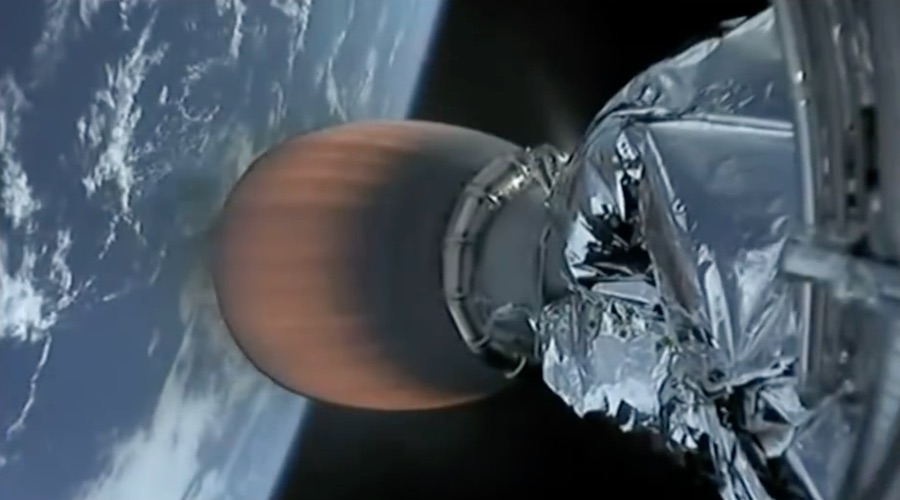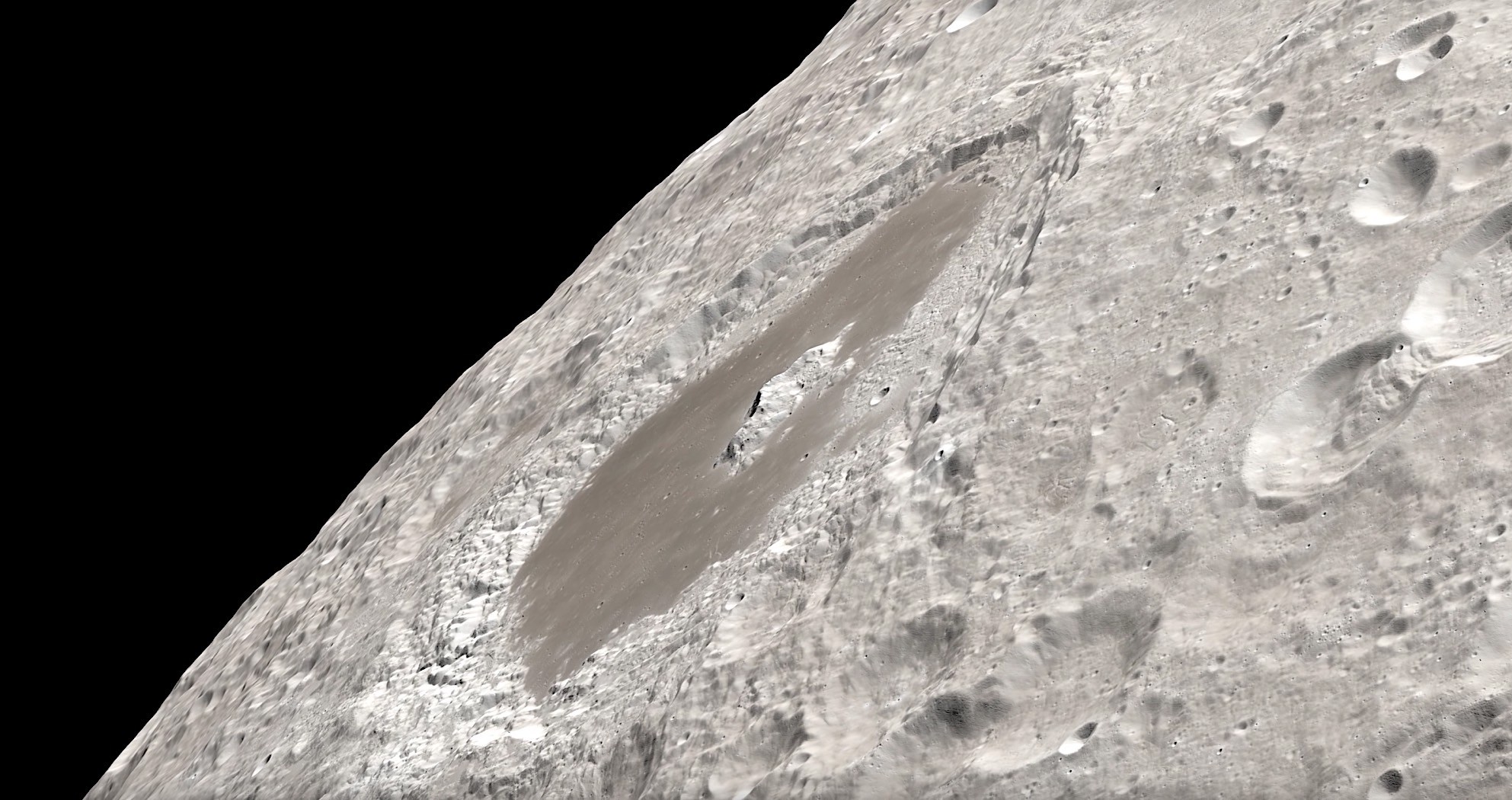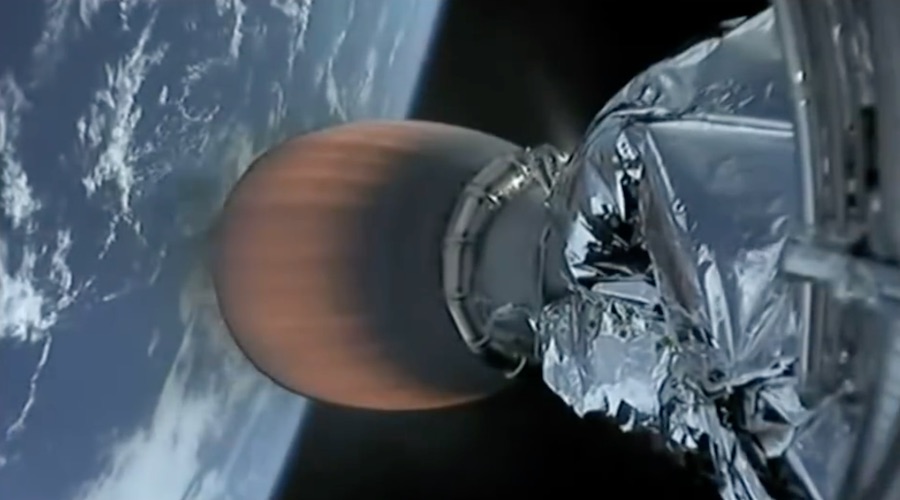
A SpaceX Falcon 9 Second Stage Is About To Impact The Moon
The Falcon 9 has been launching consistently for quite a few years now. Through this time SpaceX has managed to send a long list of payloads into orbit and land many different Falcon 9 boosters. However, the second stage presents a different story. While the majority of the time this stage burns up after re-entering Earth’s atmosphere, this is not always the case.
Recently it was discovered that the upper stage of a Falcon 9 launched around 7 years ago in 2015 is expected to hit the surface of the Moon in only a few weeks. This specific launch carried the Deep Space Climate Observatory which was a joint effort between the U.S. National Oceanic, Atmospheric Administration, and NASA. In this specific mission, the upper stage continued on in space with a trajectory towards the Moon.
Now almost 7 years later it’s getting very close to its final impact. Specifically, this upper stage is expected to hit the Moon on March 4th, just about a month away. In addition, the impact is expected to happen on the far side of the Moon meaning the impact won’t be visible from Earth. While this won’t be the first time a rocket stage has impacted the Moon it will still be an interesting spectacle.
Initial Launch Background

On February 15th, 2015, SpaceX launched a Falcon 9 from Launch Complex 40 at Cape Canaveral Air Force Station in Florida. The payload for this launch was the DSCOVR or Deep Space Climate Observatory. This observatory was built to study our planet and the space weather environment from Lagrange Point 1 or L1. This is a gravitationally stable spot about 930,000 miles or 1.5 million kilometers from Earth in the sunward direction. A similar distance from the James Webb Space Telescope which is currently orbiting L2. Specifically, this observatory maintains the nation’s real-time solar wind monitoring capabilities, which are critical to the accuracy and lead time of NOAA’s space weather alerts and forecasts.
Without timely and accurate warnings, space weather events like geomagnetic storms, have the potential to disrupt nearly every major public infrastructure system on Earth, including power grids, telecommunications, aviation, and GPS. The DSCOVR mission succeeded NASA’s Advanced Composition Explorer’s role in supporting solar wind alerts and warnings from the L1 orbit, which is the neutral gravity point between the Earth and Sun, approximately one million miles from Earth. L1 is a good position from which to monitor the Sun, because the constant stream of particles from the Sun (the solar wind) reaches L1 up to an hour before reaching Earth. The Falcon 9 is a partially reusable rocket. After the launch and separation of the stages, the booster flies back towards Earth and attempts to land by itself. However, this is not the case when looking at the upper stage of a Falcon 9. In most cases, after the second stage has delivered the payload to its correct orbit or destination, it is capable of re-entering Earth’s atmosphere where it burns up and is no longer in space.
On this specific mission, the destination meant the Falcon 9’s upper stage had to go much further out than a regular launch. Its distance from Earth when releasing the payload along with some additional factors meant there was no way to retrieve or stop the upper stage from continuing on deep into space. Ideally, this is avoided in most cases as space debris can cause issues over time and often stays in orbit for decades before finally entering Earth’s atmosphere and burning up. This mission happened in 2015 when SpaceX was still early in testing and trying to land its booster. After launch, the booster attempted a landing but was unsuccessful. Too far and fast to reenter Earth’s atmosphere, the upper stage began cruising through the Earth-moon system on a long and looping orbit for nearly seven years. This brings us to today where its expected impact is only a few weeks away.
Expected Impact

After tracking the upper stage thoroughly, scientists have found exactly when and where it’s expected to impact. Using data gathered by a variety of observers and scientists, they calculated that the stage will crash into the moon on March 4 at 7:25 a.m. EST. The impact is expected to occur on the lunar farside, at about 4.93 degrees north latitude and 233.20 degrees east longitude. This time frame and the crash site could be off slightly according to different sources but only by a small degree. In the coming weeks, observers and scientists will continue to get more accurate data and information about the upper stage and provide more accurate times and locations for the impact.
One downside about the impact is the location on the Moon. As I mentioned prior it’s expected to impact the Moon’s farside. This means the impact will not be visible to us on Earth. However, there are multiple satellites currently orbiting the Moon that may provide visuals of the impact and more. Specifically, NASA’s Lunar Reconnaissance Orbiter and India’s Chandrayaan-2 spacecraft are both orbiting the Moon as we speak. While it’s still unlikely we get a view of the impact as it happens, it’s very possible these satellites get a look at the aftermath of the impact. The second stage of a Falcon 9 weighs around 4 metric tons. Traveling around 2.5 kilometers a second, you have an extremely powerful force. Its impact is expected to create a decent size crater.
This also brings up the question of whether or not the impact is something to worry about. In reality, there is nothing to worry about at all. In terms of the Moon, it is extremely desolate and the impact does not harm anyone or anything. In fact, many are looking at this impact as a great opportunity to test and learn different things. It will provide valuable data from observations of the subsurface material that will be ejected after launch. Looking decades into the past NASA has a decent bit of experience with impacting the Moon with rocket stages. During multiple Apollo missions, the agency steered a few Saturn V upper stages into the Moon. Also in 2009, the agency intentionally crashed the upper stage of an Atlas V rocket that launched LRO into a crater at the moon’s south pole. While this specific upcoming instance is quite unique because it’s an accident, it provides a unique opportunity to research and observe the impact and its effects.
Conclusion
Space is extremely vast and filled with many unknowns. Around 7 years ago SpaceX launched a Falcon 9 with an observatory on the top. This payload was headed nearly a million miles away from Earth to the L1 orbit. While the upper stage of a Falcon 9 most often re-enters the Earth’s atmosphere and burns up, it was not possible for this mission. The speed and distance from Earth meant the upper stage was not able to be brought back. After years of flying through space in a looping orbit, it’s expected to make an impact with the Moon. This will happen in only a few weeks estimated on March 4th. We will have to wait and see the results of the impact and its effect on the current and future of the space industry.
